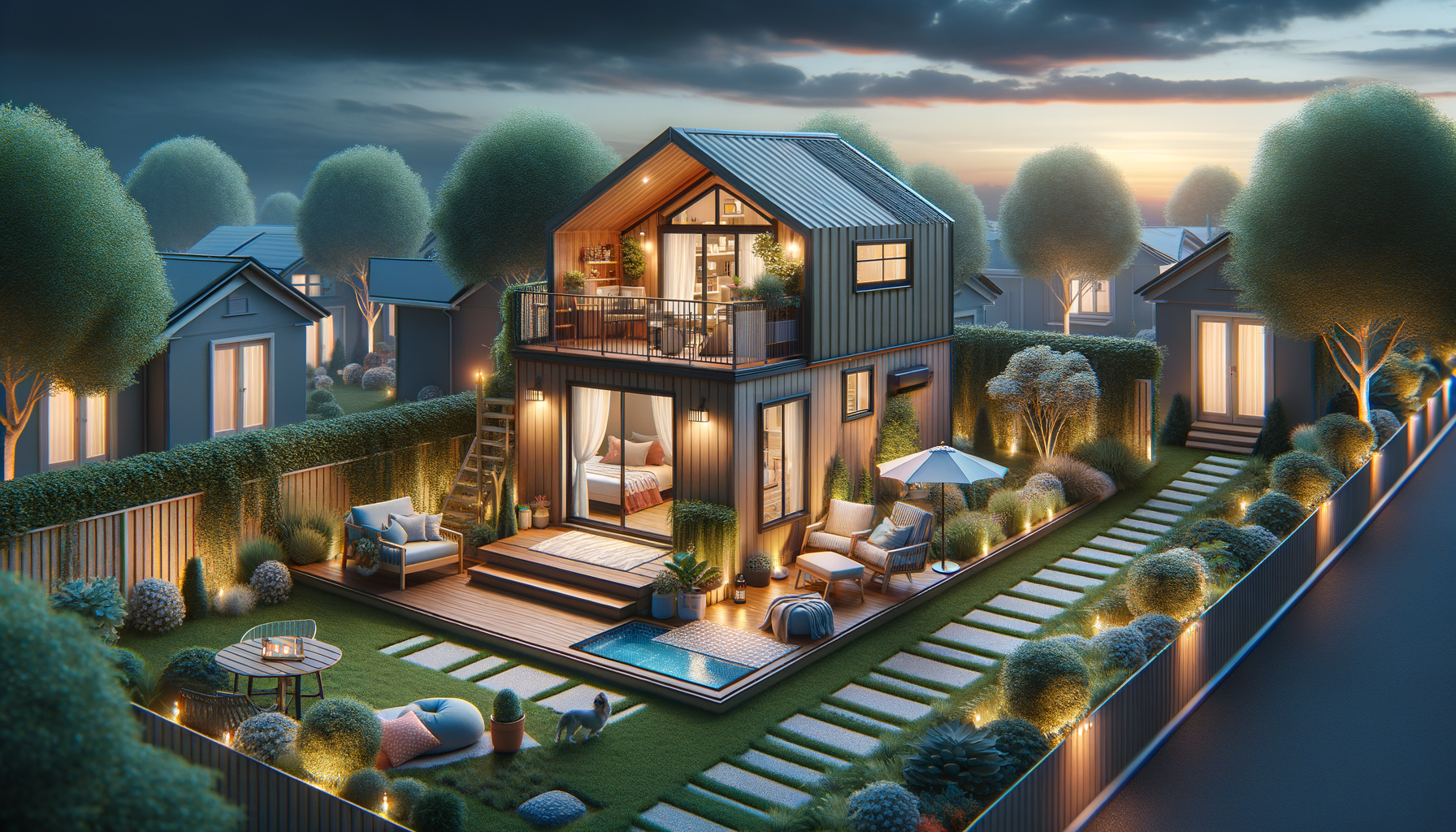Economical and Adaptable Backyard Granny Pods: Keeping Aging Parents Near
Discover how prefab Backyard Granny Pods can offer a practical and economical solution to keeping your aging parents close, without sacrificing their independence.

Understanding the Concept of Granny Pods
Granny pods, also known as accessory dwelling units (ADUs), are small, self-contained living spaces typically located in the backyard of a family home. These units are designed to provide a comfortable and independent living environment for elderly family members, allowing them to maintain their autonomy while staying close to their loved ones. The concept has gained popularity as families seek practical solutions to the challenges of aging, including the rising costs of traditional nursing homes and assisted living facilities.
Granny pods are usually equipped with essential amenities such as a bedroom, bathroom, kitchenette, and living area. They are designed to be accessible, often featuring ramps, wider doorways, and safety features like grab bars. The idea is to create a space that feels like home while ensuring safety and convenience for older adults.
These units are not only practical but also customizable. Homeowners can choose from a variety of designs and layouts, allowing for personalization that meets the specific needs and preferences of their elderly parents. This flexibility makes granny pods an attractive option for families looking to provide a supportive environment for their aging loved ones.
Benefits of Backyard Housing for Elderly Parents
Backyard housing solutions offer numerous benefits for elderly parents and their families. One of the primary advantages is the ability to keep loved ones close while maintaining their independence. This proximity allows for regular family interactions, which can enhance emotional well-being and reduce feelings of isolation that many seniors experience.
Another significant benefit is the financial aspect. Traditional assisted living facilities can be expensive, with costs often exceeding what many families can afford. Granny pods provide a more affordable alternative, with lower upfront costs and the potential for increased property value. Additionally, these units can be a long-term investment, as they can be repurposed for other uses, such as guest accommodations or rental units, once they are no longer needed for elderly care.
Furthermore, backyard housing solutions can be tailored to meet the specific health and mobility needs of seniors. Features such as step-free entrances, non-slip flooring, and emergency response systems can be incorporated to ensure a safe and comfortable living environment. This level of customization is often not available in standard assisted living facilities.
Comparing Prefabricated and Custom-Built Units
When considering backyard housing solutions for elderly parents, families often face the choice between prefabricated and custom-built units. Each option has its own set of advantages and considerations.
Prefabricated units are typically more cost-effective and quicker to install. These units are manufactured off-site and delivered ready to assemble, which can significantly reduce construction time and disruption. Prefabricated granny pods often come with a range of standard features and can be customized to a certain extent with additional options.
On the other hand, custom-built units offer a higher degree of personalization. Families can work with architects and builders to design a space that perfectly suits the needs and preferences of their elderly parents. While this option may be more expensive and time-consuming, it allows for greater flexibility in design and materials.
Ultimately, the choice between prefabricated and custom-built units will depend on factors such as budget, timeline, and specific requirements of the elderly family member. Both options can provide a comfortable and supportive living environment, making them viable solutions for keeping aging parents close.
Navigating Zoning Laws and Regulations
Before installing a granny pod in your backyard, it is essential to understand and comply with local zoning laws and regulations. These rules can vary significantly depending on the location, and failure to adhere to them can result in fines or the removal of the unit.
Many municipalities have specific guidelines regarding the size, placement, and use of accessory dwelling units. Some areas may require permits or have restrictions on the number of occupants allowed in the unit. It is crucial to research and consult with local authorities to ensure that your backyard housing solution complies with all applicable regulations.
In some cases, zoning laws may be more lenient for units that are intended for family use, which can be beneficial for those planning to install a granny pod for elderly parents. However, it is still important to verify all requirements and obtain any necessary approvals before proceeding with construction.
Working with a professional who is experienced in navigating zoning laws can be invaluable. They can help ensure that your project is compliant and guide you through the permitting process, making the installation of a granny pod a smoother and more straightforward experience.
Designing a Comfortable and Safe Living Space
Designing a granny pod that is both comfortable and safe for elderly parents is a key consideration. The layout and features of the unit should prioritize accessibility and ease of use, ensuring that seniors can navigate the space independently.
Key design elements to consider include:
- Open floor plans that allow for easy movement and reduce the risk of falls.
- Accessible bathrooms with grab bars, non-slip surfaces, and walk-in showers.
- Ample lighting to improve visibility and reduce eye strain.
- Emergency response systems, such as medical alert devices, to ensure help is readily available if needed.
In addition to safety features, the aesthetic and comfort of the space should not be overlooked. Incorporating personal touches, such as favorite colors, furnishings, or artwork, can make the granny pod feel more like home and enhance the overall well-being of its occupant.
By carefully considering both the functional and personal aspects of the design, families can create a backyard housing solution that supports the health, safety, and happiness of their elderly parents.